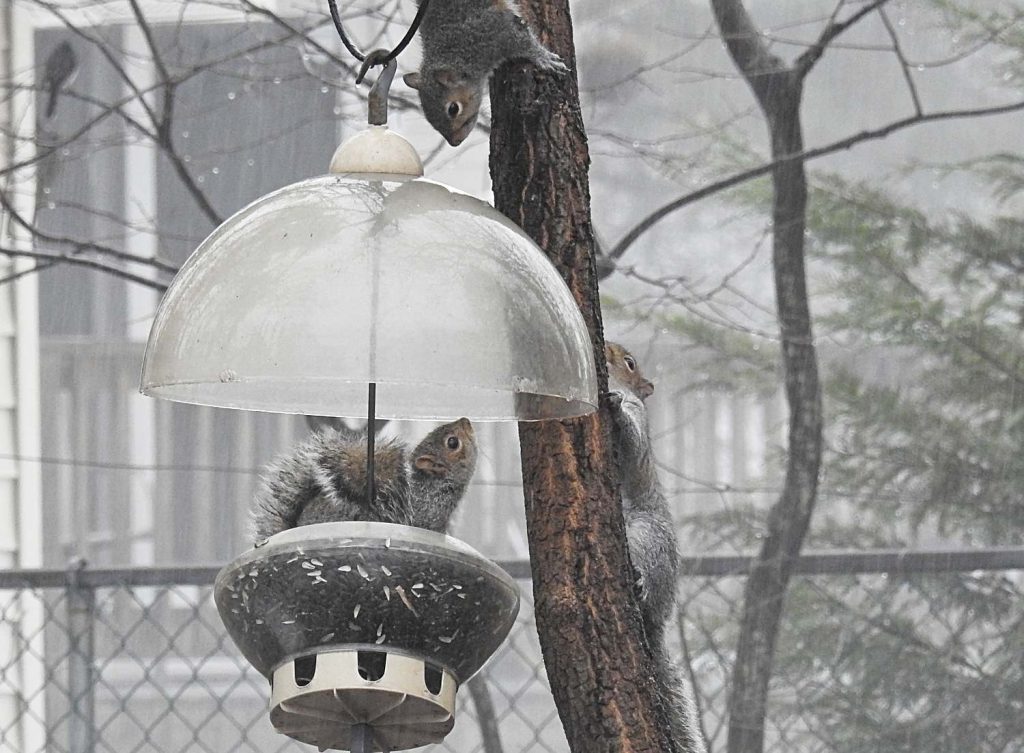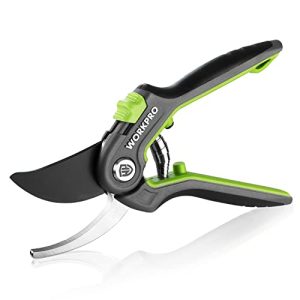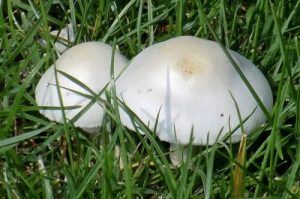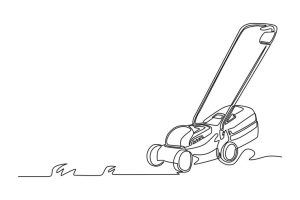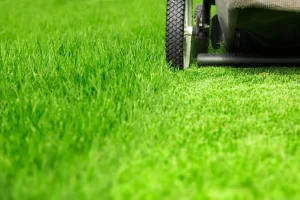Have you ever set up a bird feeder in your backyard only to find it raided by crafty squirrels? These agile acrobats seem to appear out of nowhere, making you wonder just how far they can jump to reach your bird feeder.
You’re not alone in this curiosity. Understanding the incredible feats of squirrels can help you protect your bird seeds and ensure that your feathered friends get their fair share. We’ll uncover the surprising jumping abilities of squirrels and reveal strategies to outsmart them.
Ready to learn how to keep your bird feeder safe? Let’s dive into the fascinating world of squirrel antics.
Squirrels’ Physical Abilities
Squirrels display impressive jumping abilities, often reaching bird feeders with leaps of up to ten feet. Their powerful hind legs and agile bodies make these jumps possible, allowing them to access food sources with remarkable ease. Observing their feats can be both entertaining and enlightening.
Squirrels are fascinating creatures, known for their incredible agility and surprising physical abilities. Have you ever watched a squirrel leap from a tree branch onto a bird feeder with remarkable precision? Their acrobatic feats often leave us in awe and sometimes frustration, especially when it comes to protecting bird feeders. Understanding how far squirrels can jump involves exploring their unique anatomy and natural acrobatics.Anatomy Of A Squirrel
Squirrels possess a robust yet flexible skeletal structure. Their long, bushy tails help them balance during jumps and quick maneuvers. Their hind legs are powerful and muscular, designed for propulsion. This helps them leap impressively far distances, sometimes up to ten times their body length. Their sharp claws provide a firm grip on various surfaces. This allows them to climb and hang upside down without losing balance.Natural Acrobatics
Squirrels are born acrobats, capable of performing impressive feats. Their jumps are not just a display of strength but also precision. Have you noticed how they seem to calculate the distance before leaping? They adjust their speed and angle, ensuring they land safely, even on narrow surfaces. They can twist their bodies mid-air to change direction. This skill helps them dodge obstacles and reach their target with remarkable accuracy. Can you imagine leaping from a tree to a tiny bird feeder with such ease? Next time you watch a squirrel, consider the incredible physical abilities that make them natural acrobats. Are your bird feeders squirrel-proof enough to withstand such agility?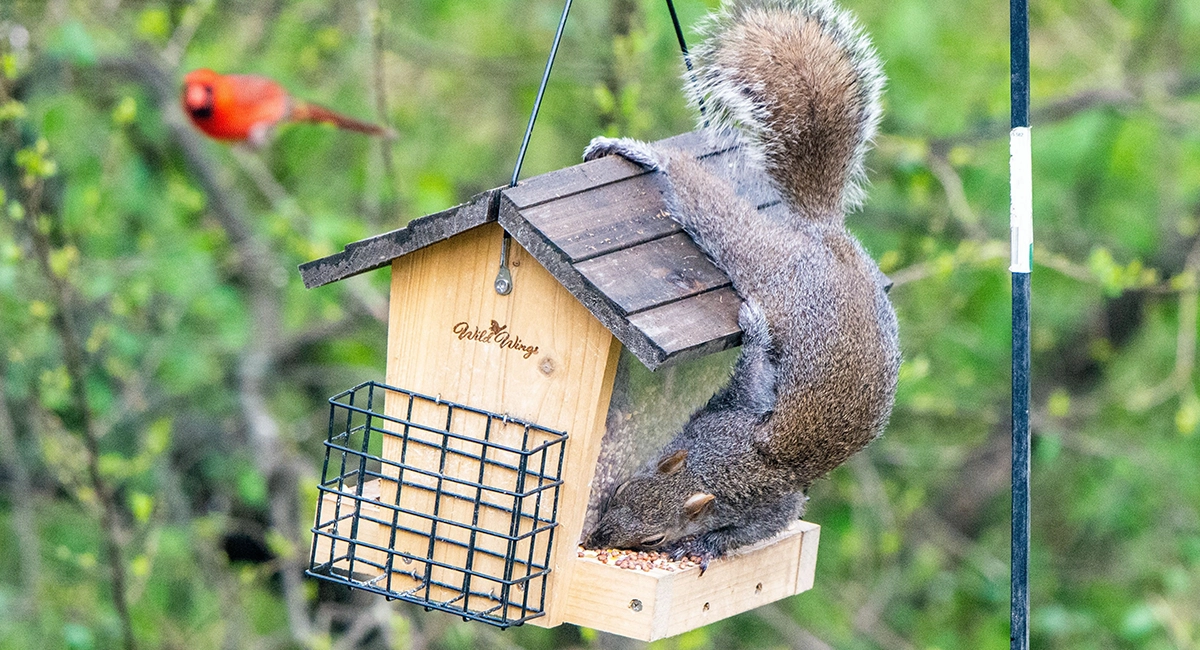
Factors Influencing Jumping Distance
Squirrels are agile creatures, known for their impressive jumping abilities. Various factors influence how far they can jump to reach bird feeders. Understanding these factors helps in designing squirrel-proof feeding stations.
Body Size And Strength
Body size affects a squirrel’s jumping distance. Larger squirrels have more muscle mass, enabling longer leaps. Stronger limbs allow them to push off with greater force. This strength directly impacts how far they can jump.
Smaller squirrels might not jump as far as their bigger counterparts. But they are often faster and more agile. Their ability to maneuver quickly can still pose a challenge for bird feeders.
Environmental Conditions
Environmental conditions also play a crucial role. Wet surfaces can reduce grip, affecting jump distance. Squirrels may slip or hesitate, decreasing their reach.
Wind direction and speed can influence jumping. A strong gust may push them off course. Calm weather allows for more precise jumps.
Temperature can impact muscle efficiency. Cold weather might stiffen muscles, reducing jump length. Warmer conditions enable more fluid movements.
Measuring The Jump
Curious about squirrel agility? These nimble creatures can leap impressively, often reaching bird feeders from 10 feet away. Their powerful hind legs and sharp claws help them navigate obstacles with ease. Understanding their jumping ability aids in designing squirrel-proof feeders.
Measuring the jump of squirrels is a fascinating endeavor that blends science with everyday observations. Have you ever watched a squirrel in your backyard, seemingly defy gravity as it leaps towards your bird feeder? Understanding just how far these agile creatures can jump involves both scientific studies and casual observations. Let’s dive into each aspect to uncover the mystery behind their impressive acrobatics.Scientific Studies
Scientists have long been intrigued by the physical prowess of squirrels. Research shows that squirrels can jump up to 10 times their body length. Considering their average body length, this means a squirrel can leap anywhere from 9 to 12 feet horizontally. Researchers often set up controlled experiments to measure these jumps. They use motion capture technology to analyze the trajectory and landing precision. The data collected helps in understanding how squirrels calculate distance and the role of their muscular strength. Understanding this might make you rethink how you set up your bird feeder. If you want to keep your feeder squirrel-free, you’ll need to consider these impressive distances.Casual Observations
Your backyard can be a surprising place for casual observations. Next time you see a squirrel eyeing your bird feeder, take a moment to notice its approach. You might see it pause, as if calculating the jump distance. Many bird enthusiasts share stories of squirrels making seemingly impossible leaps. One person might mention a squirrel jumping from a tree branch, while another might describe a bold leap from a fence. These anecdotes often lead to innovative solutions to outsmart these persistent creatures. If you’ve witnessed a squirrel’s daring leap, consider documenting it. Sharing your observations with others can help create a community of backyard scientists. Together, you can uncover patterns and develop strategies to protect your bird feeders. What have you noticed in your own backyard? Could your observations contribute to understanding these agile jumpers better?Common Jumping Techniques
Squirrels are known for their acrobatic abilities and daring leaps. These agile creatures have mastered various jumping techniques to reach bird feeders. Understanding their jumping methods can help in designing squirrel-proof feeders. Let’s explore the common jumping techniques squirrels use.
Horizontal Leaps
Squirrels can perform impressive horizontal leaps. They stretch their bodies fully to cover distance. These leaps can span over 10 feet. Squirrels use their strong hind legs to propel forward. They aim for branches or structures near feeders. This technique requires precision and strength.
Vertical Jumps
Vertical jumps showcase a squirrel’s powerful leg muscles. Squirrels can jump upwards up to 4 feet. They often use this technique to climb trees. Vertical jumps help them reach higher platforms or feeders. Squirrels position themselves below their target. Then, they leap upwards with great force.
Bird Feeder Challenges
Bird feeders are a delightful addition to any garden, attracting a variety of feathered friends. But they can also become battlegrounds between you and the ever-resourceful squirrel. These furry acrobats can leap impressive distances, turning your bird feeder into their personal buffet. As you watch in disbelief, you might wonder: how can you outsmart these clever critters?
Designs To Deter Squirrels
Crafting a squirrel-proof bird feeder might feel like an endless endeavor. Some designs focus on placement, suggesting you hang feeders at least ten feet away from launch points like trees or fences. Others recommend using baffles—those cone or dome-shaped objects—that prevent squirrels from climbing up poles.
Another popular design involves weight-sensitive feeders that close access when heavier animals, like squirrels, land on them. These can be effective, but squirrels are persistent. They might still find ways to bypass such mechanisms.
Have you ever tried greasing the pole of your feeder? While it can be amusing to watch squirrels slide down, it’s a temporary fix. Squirrels might adjust their approach and leap directly onto the feeder from nearby branches.
Squirrel-proof Feeder Myths
There’s no shortage of advice on squirrel-proof feeders, but not all of it holds water. Some claim that spicy birdseed will deter squirrels, as they dislike the heat. Yet, birds appear unfazed by the spice, and some squirrels seem to develop a tolerance over time.
Another myth is that squirrels can’t jump more than six feet horizontally. Many have underestimated their jumping prowess. A determined squirrel can surprise you with their athletic feats, reaching feeders you thought were out of bounds.
Consider this: have you ever heard that hanging feeders on thin wires will prevent squirrels from accessing them? While it might work initially, squirrels are known to chew through or shake wires to knock seed loose. Constantly replacing wires can become a hassle.
As you ponder these challenges, think about how you’d redesign your bird feeder setup. Could you change its location or height? Are there different feeder styles that match your garden’s needs better? There’s always a new strategy to try, keeping the battle with squirrels both challenging and entertaining.

Amazing Squirrel Feats
Have you ever watched a squirrel leap towards a bird feeder? Their jumps are truly astonishing. Squirrels are natural acrobats with an incredible ability to jump. These small creatures often surprise with their agility and strength. Let’s explore the amazing feats of squirrels.
Record-breaking Jumps
Squirrels can jump up to 10 feet in a single leap. Some have been observed jumping even farther. This amazing feat requires strong legs and a keen sense of balance. Such jumps help them reach food sources high up. Their tails aid in steering and landing safely. These record-breaking jumps showcase their athletic abilities.
Squirrels In Action
In action, squirrels are fascinating to watch. They perform quick and calculated moves. Often, they leap from tree branches to bird feeders with ease. Their speed and precision leave many in awe. Watching squirrels in motion is both entertaining and educational. These creatures adapt to their environment with impressive skill.
Impact On Bird Feeder Design
Squirrels can leap up to 10 feet horizontally, impacting bird feeder designs significantly. Bird feeders need strategic placement to deter these agile creatures. Designs often incorporate squirrel-proof features to protect bird food effectively.
Creating a bird feeder that effectively deters squirrels is a challenge that can greatly impact its design. Squirrels are agile creatures known for their impressive jumping abilities, often reaching distances of up to ten feet. This remarkable skill necessitates thoughtful design considerations to protect bird feeders from these crafty intruders.Innovative Solutions
Bird feeder designs have evolved significantly to counter the squirrel menace. Consider using feeders with weight-sensitive perches that close access to seeds when a squirrel lands. Similarly, baffles and domes placed above or below the feeder can thwart these jumpers by creating physical barriers. Rotating feeders add a dynamic twist to the design, making it harder for squirrels to maintain balance. Some bird enthusiasts have even crafted DIY solutions using slinky toys or PVC pipes. These inventive ideas not only make your feeder more squirrel-resistant but also add an element of fun to your backyard.Balancing Act: Birds Vs. Squirrels
When designing a bird feeder, it’s crucial to strike a balance between attracting birds and deterring squirrels. Consider the types of seeds you offer—squirrels tend to avoid safflower seeds, for example. Height and placement of the feeder are also key. Ensure your feeder is far enough from trees and structures that squirrels can use as launching pads. But remember, you still want it accessible to your feathered friends. Reflect on your own experiences: have you ever watched in awe as a determined squirrel outsmarted your setup? Use these observations to refine your strategy, ensuring your feeder is a haven for birds, not a buffet for squirrels. What creative solutions have you come up with to keep squirrels at bay? Share your thoughts and let’s outsmart these clever critters together.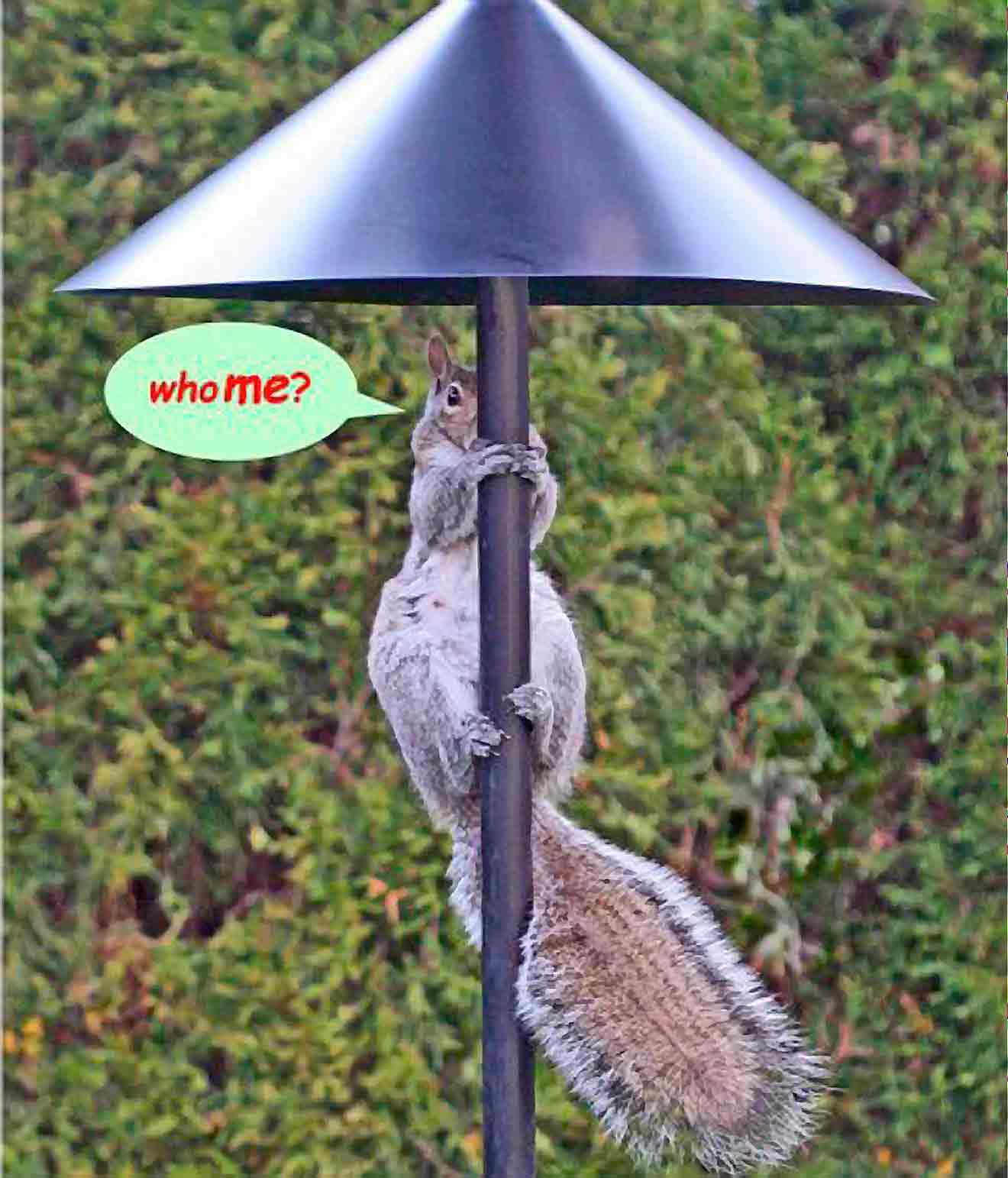
Frequently Asked Questions
What Is The 5 7 9 Rule For Squirrels?
The 5 7 9 rule for squirrels suggests planting trees and shrubs with spacing of 5, 7, and 9 feet apart. This creates a natural habitat that supports their movement and provides food sources. It encourages biodiversity and helps squirrels thrive in urban and suburban environments.
How Far Can Squirrels Jump To A Bird Feeder?
Squirrels can jump up to 10 feet horizontally to reach a bird feeder. Make sure to place feeders strategically to deter them. Use squirrel baffles or place feeders away from jump-off points like trees or fences.
How To Hang A Bird Feeder So Squirrels Can’t Get To It?
Hang the bird feeder on a sturdy pole at least 10 feet away from trees or structures. Use a baffle below the feeder to block squirrels. Ensure the feeder is at least 5 feet above the ground. Choose a squirrel-proof bird feeder with weight-sensitive perches to deter them.
Can Squirrels Climb Up Shepherd’s Hooks?
Yes, squirrels can climb shepherd’s hooks. Their sharp claws and agility help them navigate smooth surfaces easily. Consider using baffles or repellent sprays to deter them. Adjusting the feeder’s height may also help. Regular maintenance of hooks ensures they remain squirrel-proof.
Conclusion
Squirrels are amazing jumpers. They can leap up to 10 feet. This skill helps them reach bird feeders easily. Understanding their jumping ability can help protect bird feeders. You can place feeders further away from trees. Or use squirrel baffles.
These simple steps can help keep your bird feed safe. Observing squirrels can be fascinating. Their acrobatics are a marvel to watch. Next time you see a squirrel jump, remember how far they can go. Keep these tips in mind for a peaceful birdwatching experience.
Happy bird feeding!

